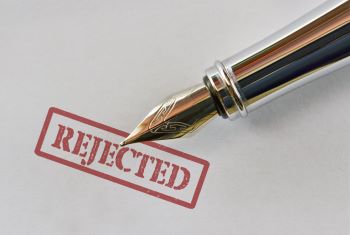
Academicians do not often associate the word “speed” with the publishing process, but when years of research turns into words on paper, authors are eager to have their work published quickly.
Between initial assessment, peer review, and the potentially large number of submissions, editors need time to carefully consider each prospective paper for their publications; however, authors looking to establish themselves in an emerging research area are looking for quick turnaround. The following tips can help guide you in developing your work into a meritorious manuscript that avoids a continuous loop of rejection.
Drafting Early
For many of us, ideas come and go quickly. Do not be afraid to begin writing, even if your research is still in progress or you have not yet established your key points. By drafting early, you have more time to structure your thoughts and findings into a meaningful document. Start with your abstract and introduction, then move to brainstorming about the direction of your manuscript. Formally writing the subsequent manuscript while the foundation for your research is still fresh in your mind will allow for a more convincing and coherent argument.
How to Avoid Jargon and Find Simplicity
Despite what many novice scholars believe, filling a manuscript with too much technical and flowery language creates ambiguity and makes it difficult to establish credibility with your readers. The key is clarity. If editors and peer reviewers have trouble understanding your argument or view your writing as convoluted rhetoric, they will say so in their assessments and lean toward rejection. Dr. Anabela Mesquita, Editor-in-Chief of the International Journal of Technology and Human Interaction, reveals that sometimes, “authors use such a hermetic language that it is not accessible to all kinds of readers.” Professional copy editors and proofreaders can help introduce clarity in your writing while remaining authoritative.
Aim for the Most Fitting Publication

Many scholars incorrectly opt to submit their work to a journal or book solely because it is included in prestigious indices as opposed to ones that focus on the relevant topic of the respective manuscript. Once a peer reviewer realizes the work is out of the scope of the book or journal and is, therefore, not suitable for publication, it will be rejected. To avoid this, consider your past reference lists or discuss pertinent journals or books with your colleagues. You should also read the full scope of each publication you consider and pinpoint one that marks all your checkboxes. This will help you avoid getting rejected and will ultimately extend your publication timeline as you search for a more fitting book or journal.
There are tools available to help determine the best fit for your manuscript, including eContent Pro’s free Journal Finder. The Journal Finder will match your work with a handful of related journals, ensuring your research ends up in the most suitable publication.
Talk to the Editor
Contact the book or journal’s editor to find out whether your work falls within the intended topic area of the publication. Include your abstract so they can clearly determine this for you. In fact, a pre-submission inquiry, or proposal, is required by many publications. This is helpful for several reasons, with an emphasis on the amount of time it could save you if your work is not suitable. Finding this out early in the process, rather than after months of waiting, will prove to be invaluable.
Follow the Style and Formatting Guidelines

Publishers have distinct style guidelines that contributing authors must follow, and these details cannot be overlooked. The guidelines are easily found on a publication’s website and should be studied carefully prior to submission. Everything from your title to page numbering, from endnotes to word counts must be cross-checked against these guidelines. The fastest way for a manuscript to be rejected is to not follow the guidelines set forth by the publisher. As part of the copy editing service through eContent Pro, a publisher’s unique guidelines are considered and are corrected before the chance of rejection can present itself. In not taking this step, you will end up in that continuous loop of revision or possibly rejection whenever you try to submit your manuscript to a different publication. This will cause your work to stall and take a significant amount of time to be published.
Lastly, be sure that your paper meets all requirements of the specific referencing style mandated by the publication. For instance, a submission to Inderscience in APA style may result in rejection, but the same document submitted in APA style to IGI Global would satisfy their requirements. To ensure you meet the necessary requirements, it is highly recommended that you submit your manuscript to a professional copy editor.
Figures Matter
Always use quality images in your work. If your images are blurry, graphs are hard to read, or the data is not presented in a logical manner, get new ones. Editors want figures presented in an easily accessible way. If you provide figures that are ill-prepared, it casts a negative light on your manuscript, which could be detrimental.
In following with the previous point, you also want to verify that you have figures that meet the publisher’s specific formatting requirements.
Beyond standard copy editing, eContent Pro offers services catering specifically to figures. If you are cornered about the quality and presentation of your figures, eContent Pro’s design and math configuration experts can help ensure they positively represent your research.
Ask a Colleague to Review Your Work Before Submission
Find someone who is an expert in your field of study, but not too close to you personally. This will help you to get an honest and straightforward review of your paper. In turn, you can make minor final revisions before submitting to a book or journal. In doing so, it can alleviate more extensive changes that might be demanded by peer reviewers later.
For further piece of mind, submit your manuscript to eContent Pro for scientific and scholarly editing for an unbiased and thorough review of your work. Allow a Ph.D.-level expert to evaluate your manuscript and take the stress out of your submission by ensuring your research is polished and ready to be accepted.
Check the Status
Even if you are looking for speedy publication, know that selecting and developing manuscripts for a publication is a fastidious process, so be patient at the beginning. The decision-making process can also vary widely between different research areas. Generally, you will not want to be bothersome to the editors or the publisher during this process. With that being said, after about four months, it would be appropriate to cordially follow up to check the status of your submission. Consider our tips on how to properly check on your manuscript’s submission status.
Converse with the Peer Reviewers
Once you get past the initial evaluations and review process, take a moment to commend yourself on this notable accomplishment—you earned it. At this point, instead of just implementing the edits reviewers might have suggested, contact them. Write a detailed and polite response to your manuscript’s evaluators; not only with conversant replies or civil rebuttals, but also an enthusiastic “thank you.” This will reduce your chances of a rejection and will speed up your potential publication as the editor will likely not need to request any
further changes.
Takeaway
With so many steps in the publishing process—research, writing, review, revision, proofing, production, and finally, publication—it takes time. By following the tips and approaches we outlined above, it can shed months off your wait time, and help to ensure the quick publication of your manuscript. Remember, the best way to avoid rejection and ensure your work is widely circulated and cited is to seek out different outlets that provide pre-submission assistance. As noted in the points above, eContent Pro is the perfect resource to utilize if you want your work to make it through to final publication.
Give yourself the best chance of acceptance and benefit from the highest quality service, quickest turnaround, and best customer support with eContent Pro. Get started today by uploading your document or contacting customerservice@econtentpro.com directly.
About eContent Pro: eContent Pro is a U.S.-based, professional editorial and publishing services provider for authors, publishing houses, libraries, organizations, university presses, and societies. Offering professional copy editing, translation, scientific and scholarly editing, journal recommendation, typesetting, figure, chart, table, and equation conversions, as well as other production services, we have provided the highest quality editorial services and content advisement to scholarly outlets and individuals around the world. To learn more about eContent Pro, visit the website here or email customerservice@econtentpro.com.

